
The rise of non-alcoholic beverages
By Jack Kazmierski
Food Trends Alberta Auralis Botanical Brewing Company Harmon's Craft Brewing Libra Non-alcoholic beverages Ontario Prince Edward Island Village BreweryAn area for growth and innovation in beverage manufacturing
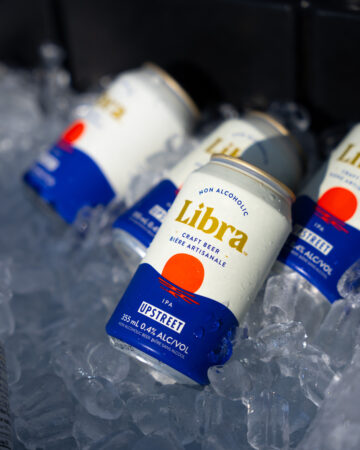 The global
non-alcoholic beer market is expected to worth more than US$43.6 billion
by 2032. Photos courtesy Libra Bev. Co. Brewing
The global
non-alcoholic beer market is expected to worth more than US$43.6 billion
by 2032. Photos courtesy Libra Bev. Co. Brewing Alcohol sales dropped in volume by 1.2 per cent in 2022, according to Statistics Canada. This was the first decline since 2013-14, and the largest decline in over a decade.
The drop in alcohol consumption seems to coincide with a rise in the popularity of non-alcoholic beverage sales in Canada. According to a 2022 survey by Future Market Insights, “The global non-alcoholic beer market is expected to surpass a valuation of US$43.6 billion by 2032, expanding at a 7.8 per cent CAGR.”
Non-alcoholic beer is the fastest growing segment of all the non-alcoholic beverages. Mitch Cobb, co-founder and CEO of Libra Bev. Co., says his company launched their first non-alcoholic beer in 2020, “and saw tremendous success. In the first year-and-a-half, we launched five different styles of non-alcoholic craft beers. From 2021 to 2022, we saw a 300 per cent growth in sales.”
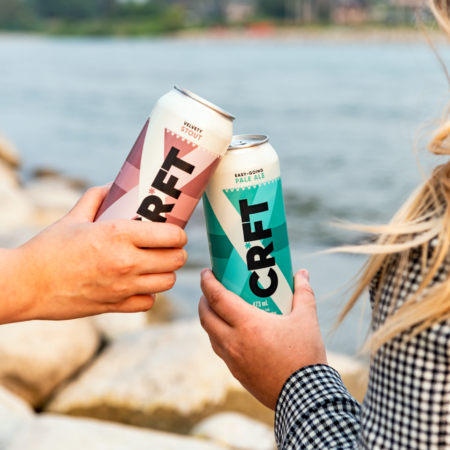
Photos courtesy Village Brewery
Health benefits
Earlier this year, the Canadian Centre on Substance Use and Addiction released new guidance on the consumption of alcohol and health, warning that less is better. Health is a key motivator behind the Dry January movement, which has helped shine the light on non-alcoholic beverages.
“People are starting to pay more attention to their health and wellness and they’re recognizing that alcohol doesn’t play a part in helping them be healthy,” says Cobb. “They’re looking to reduce their alcohol consumption.”
Steve Abrams, co-founder of Harmon’s Craft Brewing in Toronto, says his company is seeing a lot of “35- and 45-year-olds with families and responsibilities” getting into non-alcoholic beverages. “They love beer, but sometimes it just doesn’t make sense to have one. We know that 80 per cent of all non-alcoholic customers still drink alcohol, they’re just slowing it down.”
Jeff Popiel, president of Village Brewery, Calgary, Alta., says non-alcoholic beverages have seen “triple-digit growth for several years.” One of the reasons is health. “Non-alcoholic beer is low-carb, low calorie, low sugar, and, of course, low alcohol.”

Jeff Popiel
Popiel explains consumers may also be using non-alcoholic beverages to “regulate their blood alcohol differently. Perhaps they must drive, so they’ll have one real beer and one non-alcoholic drink. They can go to a party and have what looks like a beer, as it’s a high-quality beverage, and they can still fit in socially.”
Better beer
Non-alcoholic beer has come a long way. “Ten years ago,” Cobb explains, “there was a real stigma about non-alcoholic beer. It didn’t taste good.”
Abrams agrees. “For decades, non-alcoholic beer was awful,” he says. “It used to be, what I call, ‘penalty box beer.’ In other words, you were punished for drinking it. It tasted like wet newspaper.”
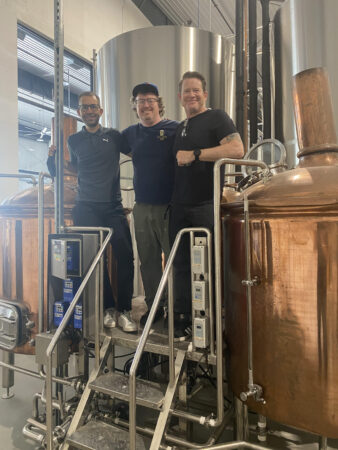
Mike Cuch, Rob Doyle, and Steve Abrams, founders of Harmon’s Craft Brewing. Photo courtesy Harmon’s Craft Brewing
Fast-forward to the 2020s, and much has changed. Non-alcoholic beer is more appealing to the palate than ever before. “We brew the beer to 0.5 per cent alcohol,” Abrams explains. “We’re not running it through machinery to extract the alcohol. Instead, we’re using new strains of yeast, and that’s been the big breakthrough that has allowed us to replicate various styles of beer.”
He says the secret to making non-alcoholic beer taste as good as real beer is part science and part art. “You can add all the hops you want, and make different styles of beer,” he explains, “and you can get the recipe to where it tastes like a regular beer.”
The challenge, of course, is convincing consumers that today’s non-alcoholic beer won’t put your taste buds in the “penalty box.”
Brewing technologies
Popiel explains that making a good-tasting non-alcoholic beer is all about the process. “Brewing is an age-old art,” he explains. “You have four ingredients, and it all comes down to how you choose to use those ingredients.”
This means a traditional brewery wouldn’t necessarily have to invest in new equipment to make non-alcoholic beer. Popiel says his company brews their non-alcoholic beer in the same brew house and the same kettles as their regular beer. They just have a proprietary process to make their non-alcoholic products appealing to the palate.
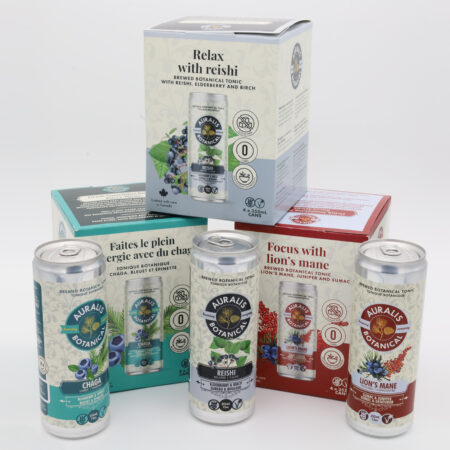
Auralis Botanical Brewing uses mushrooms as the main ingredient in its
non-alcoholic beverages. Photos courtesy Auralis Botanical Brewing
Profit and potential
Abrams says there’s more profit in non-alcoholic beer, as it can not only be sold in places where regular beer can’t, but also “you don’t have to deal with the same taxation,” he explains. “There’s no excise tax or alcohol levy tax. Brewers in Canada are fighting tooth and nail to stop all the tax layers from going up.”
Abrams adds he also needs less ingredients, which reduces costs. “When it comes to ingredients like malt, you don’t need as much when you’re making non-alcoholic beer because it’s not fermenting to the higher levels,” he says. “So it’s absolutely less expensive to make, and potentially more profitable.”
For Village Brewery, the cost to make non-alcoholic beer is “on par” with regular beer brewing. “The difference is the cost of selling and distributing it,” he adds, “which makes it less profitable.”
The brewery used a centralized liquor distribution channel in Alberta when selling regular beer. Now, they’re shipping nationally, which has increased distribution costs. Additionally, they also had to invest in new advertising methods.
Social lubrication
Andreas Düss, co-founder and CEO of Auralis Botanical Brewing, which specializes in non-alcoholic beverages made from mushrooms, says all non-alcoholic beverage manufacturers are working to satisfy the need of a very niche market. “I think the space we’re all playing in is social lubrication without alcohol,” he says.
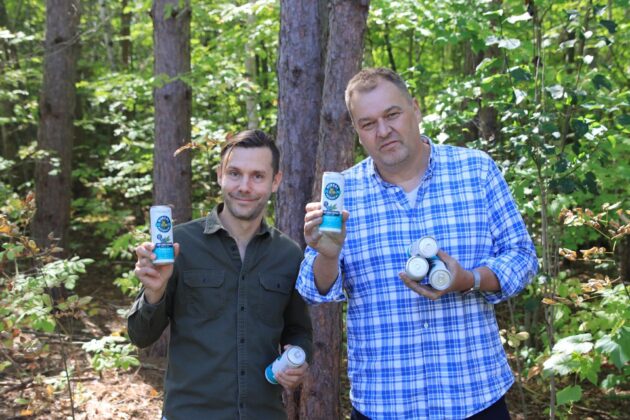
Chef Mike McKenzie and Andreas Düss, founders of Auralis Botanical Brewing.
When a non-drinker goes out with friends, Düss adds, he may find himself wondering what they’re going to drink. “Am I going to sit there nursing a glass of water while they’re having a couple of beers?” he adds. “We offer an alternative to alcohol, and we say, ‘You can still enjoy yourself with the people you care about, and you won’t feel like the odd one out who sits there with a glass of sparkling water.’”
Getting back to health benefits, Düss explains, “You can drink something that’s interesting, but the benefit is that you can wake up in the morning and remember everything; you didn’t -embarrass yourself or throw up in the taxi; you didn’t say anything you’ll regret; and you can even go to the gym. That’s the problem we’re solving.”
This article was originally published in the April/May 2023 issue of Food in Canada.
Print this page